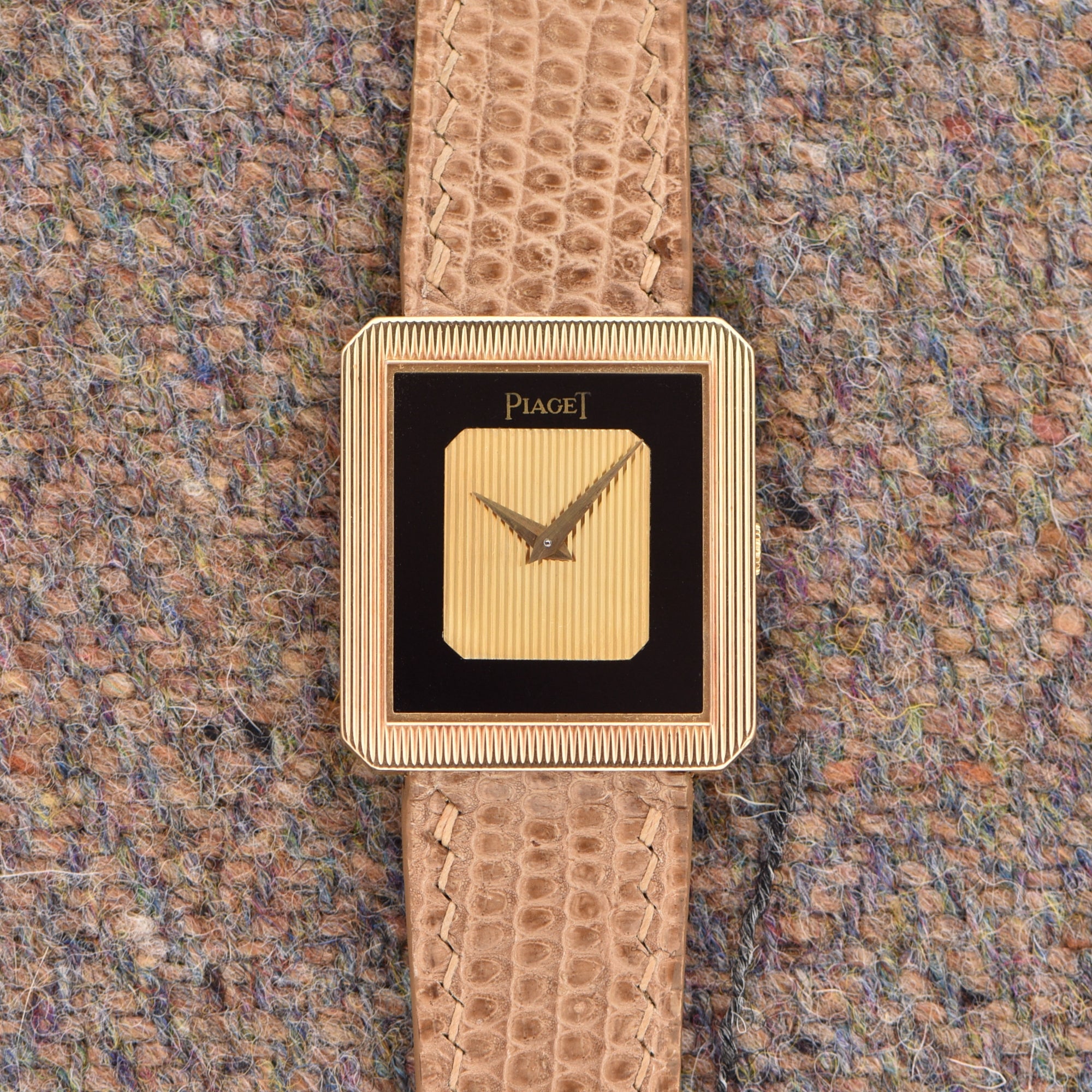
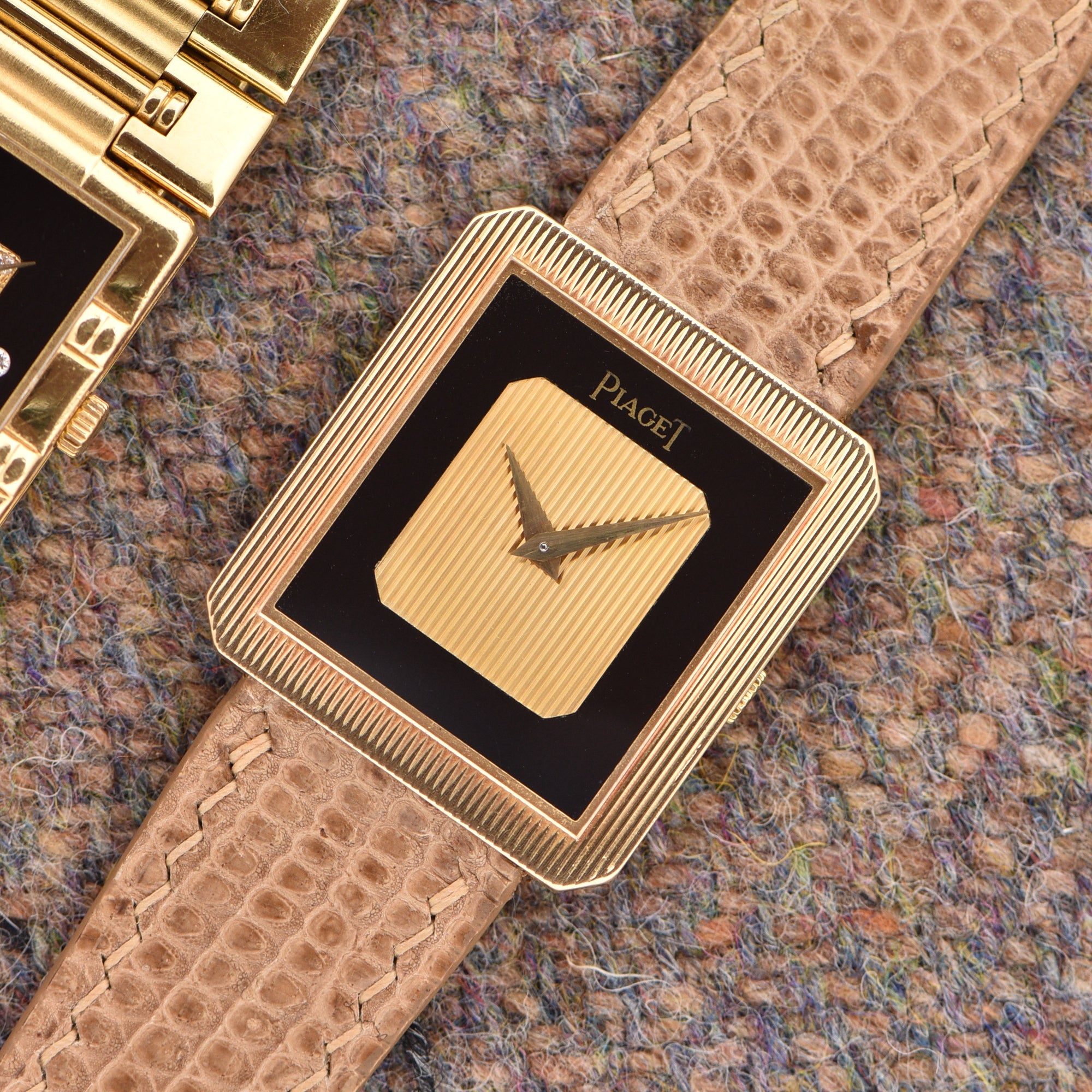

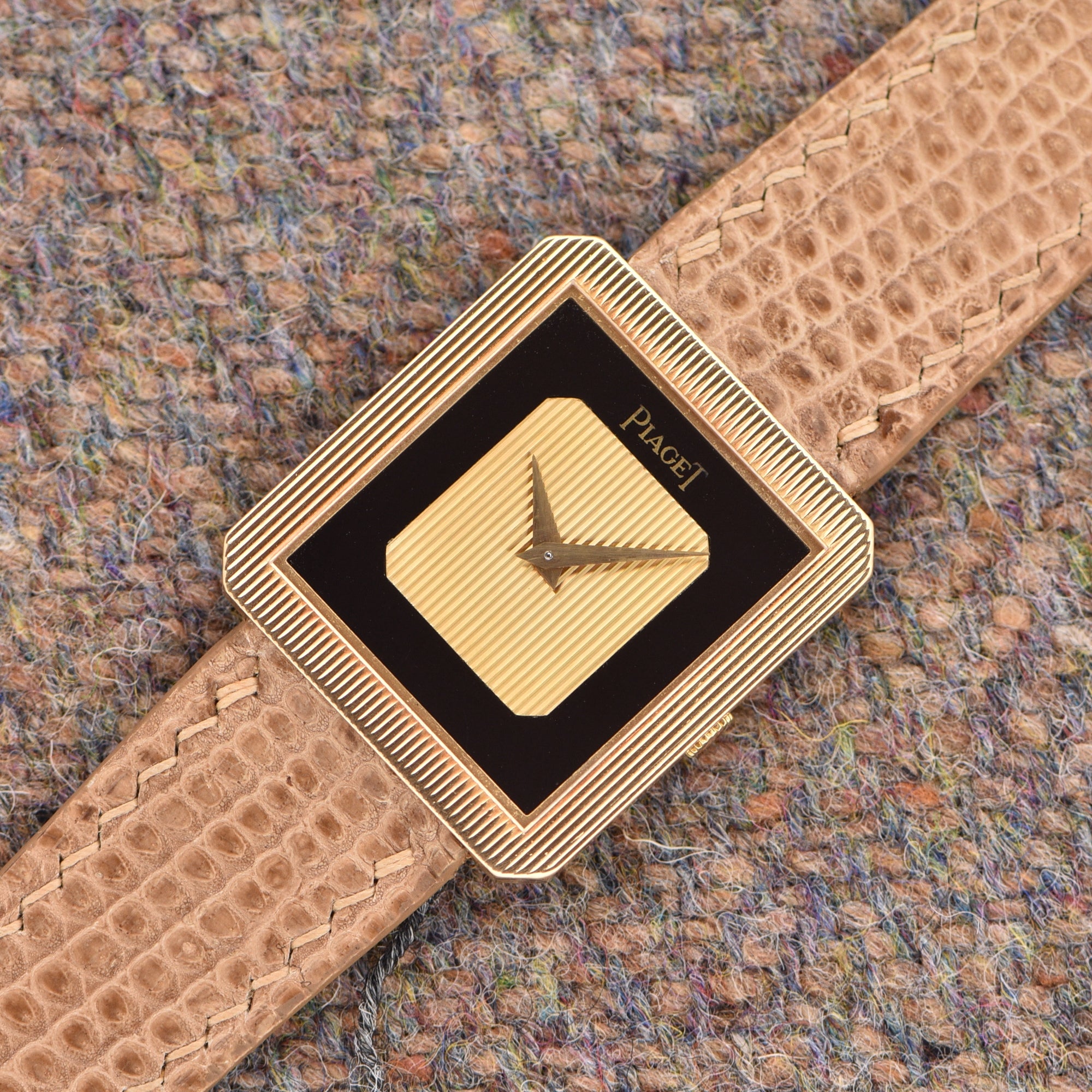
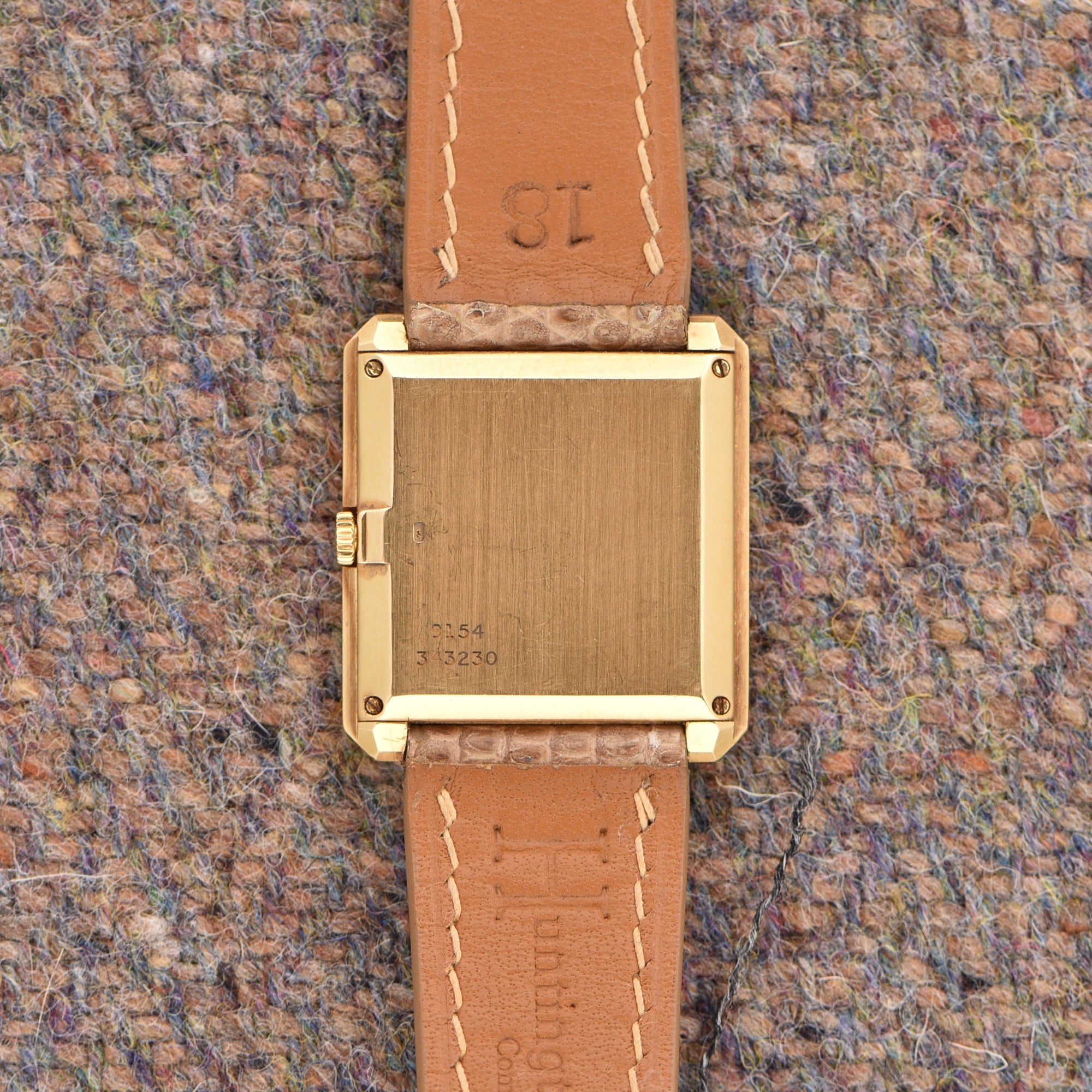
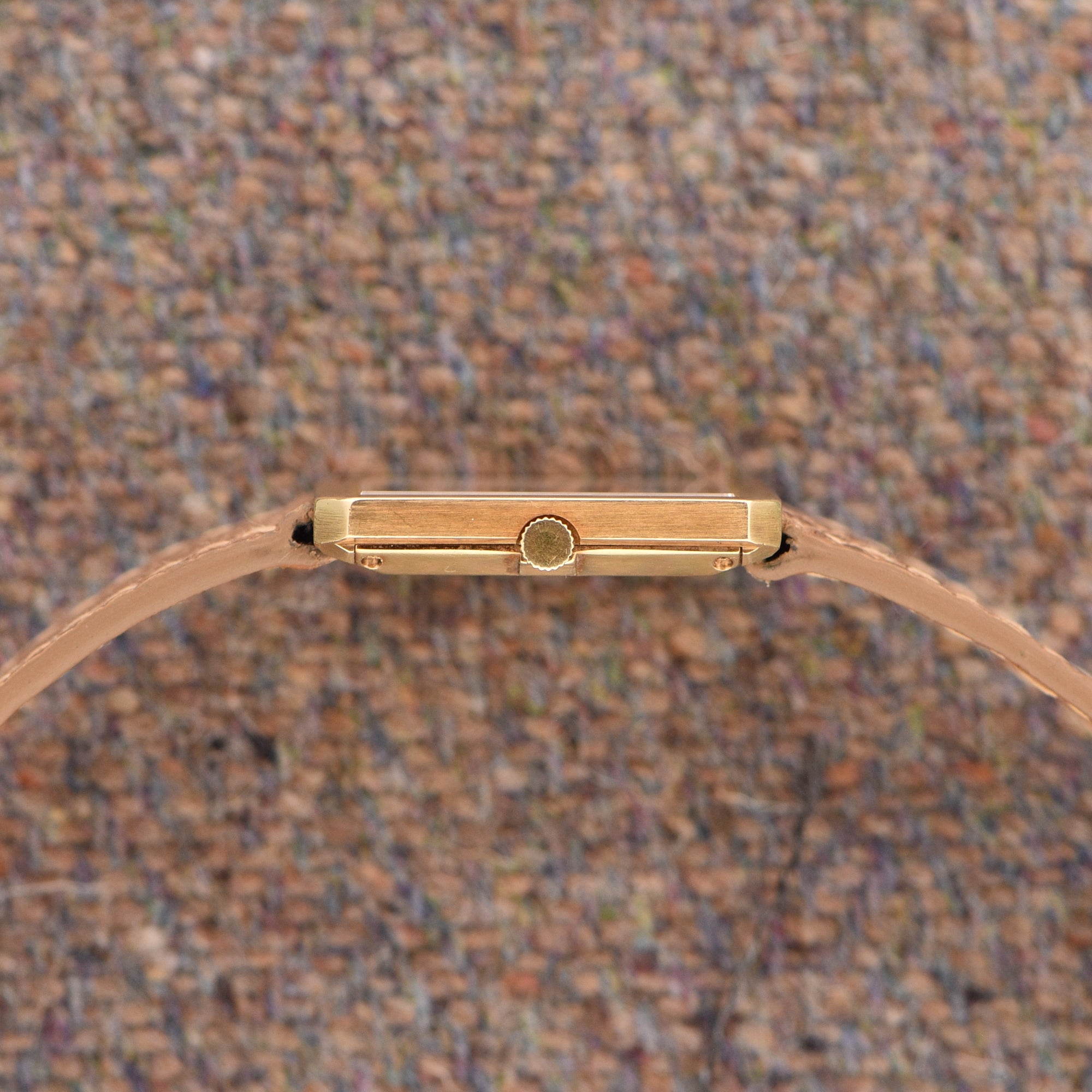
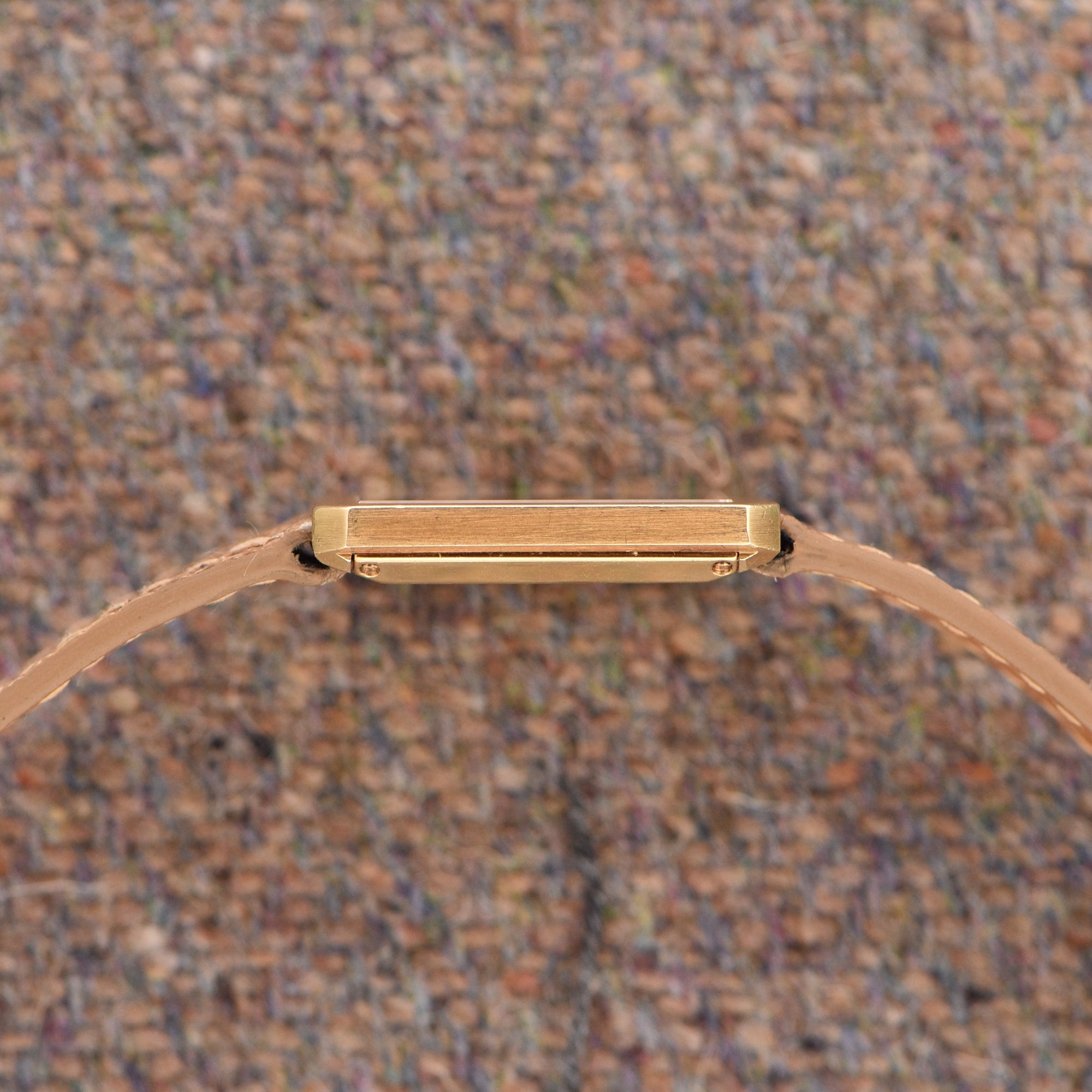
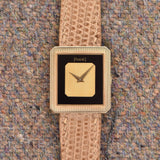
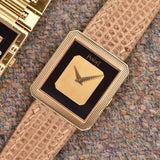
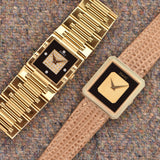
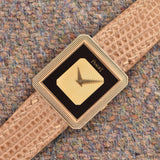


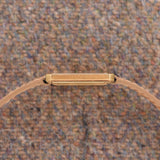
Piaget Protocole Onyx Stone Tapestry Dial
- Ref. 9154
- Watch Only
- Wire Price: $5,500
- Specifications
- The Story
- The Brand
Year: Circa 1980
Model: Protocole
Case Diameter: 23mm
Lug to Lug: 28mm
Case: 18k Gold
Dial: Onyx and Gold
Movement: Manual
Condition
The case is unpolished and very clean. The dial is a very clean Onyx stone with the center gold tapestry. The Onyx stone does not have any cracks.
In 1945, Gérald Piaget became Chairman and Managing Director of Piaget, leading to the development of expertise in extra-plat movements. The Piaget 9P caliber, introduced in 1957, was one of the world's thinnest manual wind movements with 89 components. The 9P2 was an improvement of the 9P, with a 20.5mm x 2.15mm movement running at 19,800 A/h frequency but with only 86 components. The extra thickness was necessary for robustness, as the balance spring is glued to the stud and the collet is a greiner-type that cannot be removed.
The 9P was engineered in 1956 and introduced in 1957, found in both men's and ladies' watches. The 9P2 was replaced by the 9P2 in the 1990s, but the exact date of its replacement remains unknown. Piaget movement numbering is not chronological, with the 4P launched in 1976 after the 9P. The 6P and 6N movements are likely from the 1950s, with the oldest watches dating back to 1957 and 1955 respectively.
The 6P movements stopped in regular watch use when ladies' watches became bigger, allowing the 9P to be used. Piaget led the change in the 1960s-70s to allow ladies to read their watches without the embarrassment of reaching for reading glasses. The 6P movement specifications are no longer listed in today's Piaget reference manual, but they are of the same era and maybe a few years earlier than the 9P.
The 9P was long in production, with the quartz period making exact stoppage years difficult to determine. The closest to determining the start date of the replacement 9 ligne or 20.3 mm movement is the 20.5mm 430P movement launched in 1998.
The 9P is the most important piece of Piaget's history and the Protocole is one of the most popular models from the brand.
In 1874, Georges Edouard Piaget established the Piaget Company in La Côte-aux-Fées, Switzerland, where he created precise mechanical complications for established watchmaking companies. As his skills became more known, the company became a family-run business. In 1943, the company was officially registered and became a brand, with watches designed and manufactured under their name. The company's grandsons, Gérald and Valentin Piaget helped make the brand more widely known.
In 1945, a new facility was built in La Côte-aux-Fées, leading to more complex mechanical movements. Piaget's watchmaking innovations included the Caliber 9P, a thin manual watch movement, and the Caliber 12P movement, the slimmest self-winding movement in the world at only 2.3 millimeters thick. This innovation opened up the doors for creating popular jewelry watches.
Piaget became known for their timepiece mechanics and as master jewelers, creating pieces such as jewel watches, coin watches, ring watches, brooch watches, cufflink watches, and matinee necklaces. In 1988, Piaget joined the Luxury Group, now known as Richemont, which owns several leading luxury brands. This allowed Piaget to grow and develop as a leading luxury brand.
In 2001, Piaget opened its Manufacture de Haute Horlogerie outside of Geneva, Switzerland, to respond faster to their expanding customer base's demands. Just one year after opening the Geneva workshop, the master watchmakers developed the Caliber 600P, the thinnest Tourbillon movement in the world at just 3.5 millimeters thick. In 2005, Piaget entered the small circle of brands with their own chronograph movement, creating a 5.6 mm-thick dual-time flyback caliber. In 2010, Piaget introduced the 1200P and 1208P, ultra-thin self-winding movements similar to the 12P launched 50 years prior.
Over the years, Piaget has built a strong business and a reputation as a leading luxury brand, with the company expected to continue growing as a brand for many years to come.
Piaget Protocole Onyx Stone Tapestry Dial
Authenticity Guaranteed
All our watches are carefully inspected to insure the authenticity of the watch
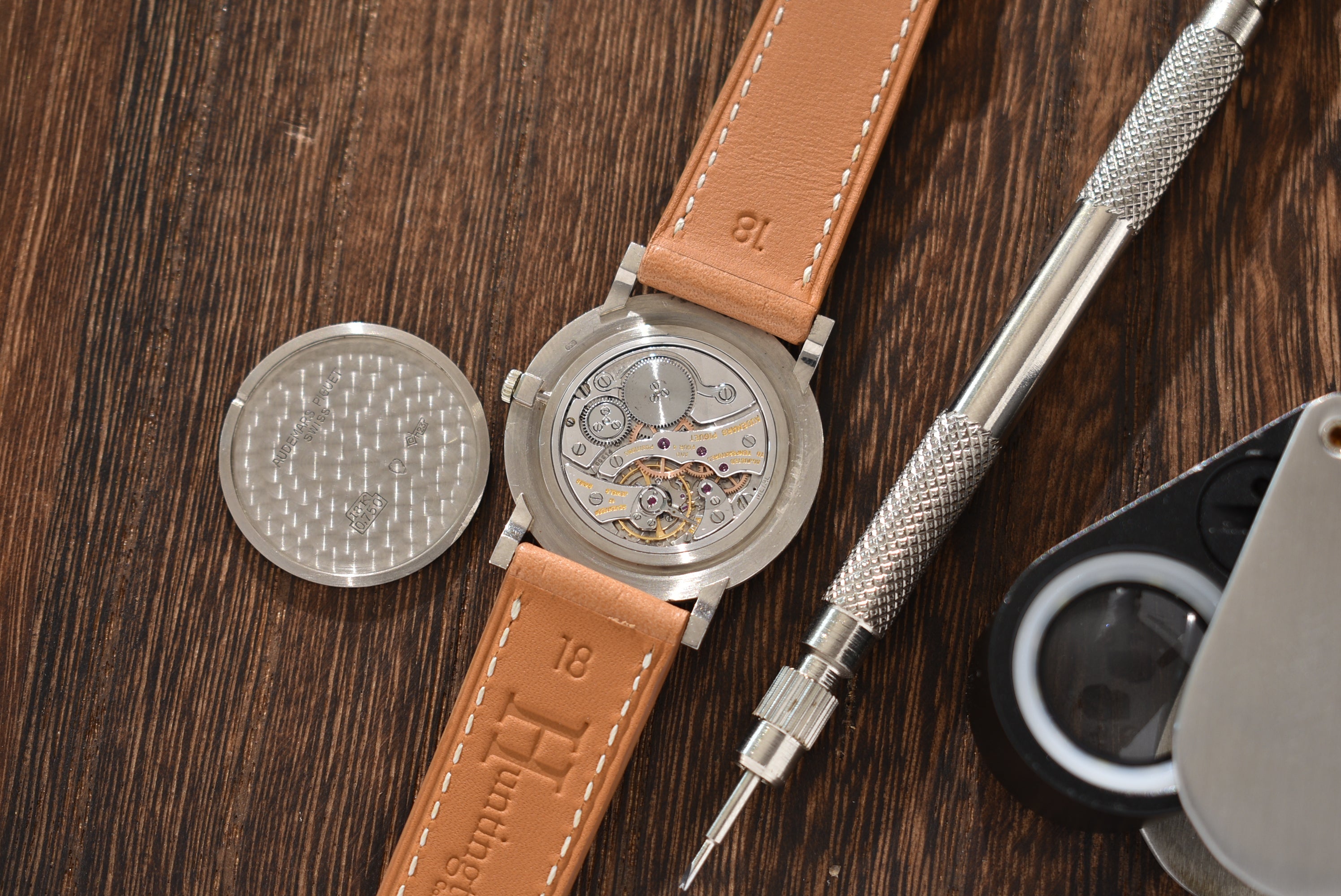
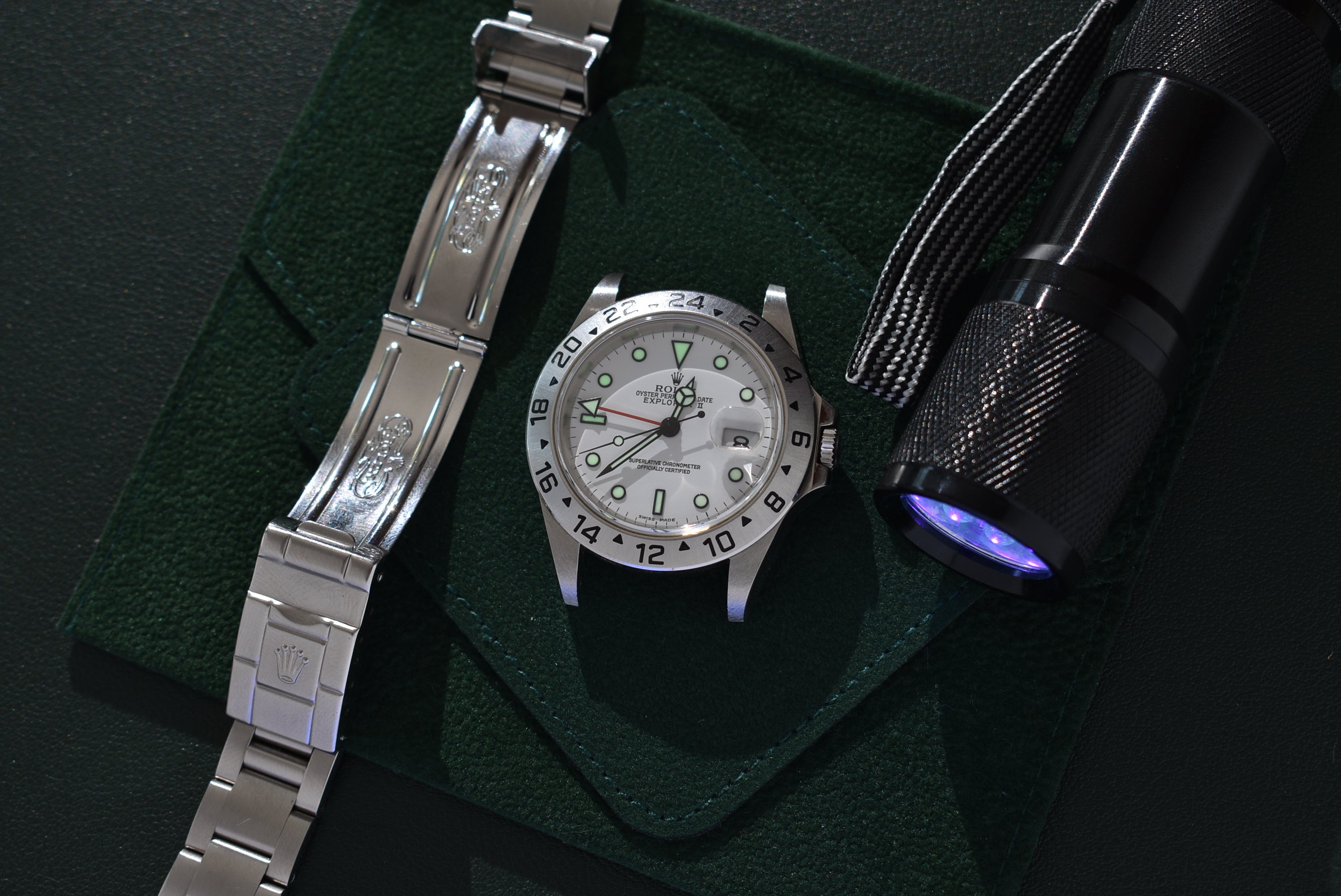
The Details
All our watches are scrutinized during inspection to make sure our descriptions are as accurate as possible.
- Related products
- Recently viewed
